中国组织工程研究 ›› 2019, Vol. 23 ›› Issue (12): 1859-1863.doi: 10.3969/j.issn.2095-4344.1124
• 数字化骨科 digital orthopedics • 上一篇 下一篇
3D打印骨折模型在复杂股骨远端骨折修复中的应用价值
黄智勇1,苏丽萍2,蓝孝全3,郭 强2,马建林1,黄佳军1,赵敦旭1,邢建龙1,纪 翔1,招 明1
- 青岛市城阳区人民医院,泰山医学院附属青岛医院,1骨创伤科,2骨关节科,3 3D打印医学转化中心,山东省青岛市 266109
Value of three-dimensional printed fracture model in the repair of complicated distal femoral fractures
Huang Zhiyong1, Su Liping2, Lan Xiaoquan3, Guo Qiang2, Ma Jianlin1, Huang Jiajun1, Zhao Dunxu1, Xing Jianlong1, Ji Xiang1, Zhao Ming1
- 1Department of Traumatic Orthopedics, 2Department of Bone and Joint, 3Center of 3D Printing Translational Medicine, Chengyang People’s Hospital of Qingdao & Qingdao Hospital Affiliated to Taishan Medical University, Qingdao 266109, Shandong Province, China
摘要:
文章快速阅读:
.jpg)
文题释义:
3D打印技术:属于快速成形技术的一种,它是一种数字模型文件为基础,运用粉末状金属或塑料等可黏合材料,通过逐层堆叠累积的方式来构造物体的技术(即“积层造形法”)。3D打印技术在多种骨折的辅助治疗中其重要作用。
3D打印技术的临床应用:临床研究发现该技术能立体、客观的呈现骨折情况,通过1∶1实物还原骨折断端,进而帮助临床医生评估病情,设计手术方案。
摘要
背景:虽然有研究提示3D打印技术适用于多种骨折的辅助治疗,但该技术是否适用于复杂股骨远端骨折仍有待商榷。
目的:探讨3D打印骨折模型在复杂股骨远端骨折修复中的应用价值。
方法:患者均来源于泰山医学院附属青岛医院,均因复杂股骨远端骨折就诊并接受手术治疗,共纳入患者107例,其中患者51例接受常规内固定修复设为常规组,患者56例在常规复位手术前结合3D打印技术预处理设为3D组。随访1.0-1.5年。
结果与结论:①与常规组比,3D组在手术期间用时明显缩短,出血量明显减少,术中需要的透视次数明显减少,术后引流量较少,出院时间较早(P < 0.05);②术毕X射线显示骨折复位方面,3D组的满意度为85.7%,虽略高于常规组的78.4%,但差异无显著性意义(P > 0.05);③在评级骨性愈合上,两组骨性愈合时间相当(P > 0.05)。术后1年进行恢复效果HSS评级评价,3D组HSS评级优良率为91.1%,虽然略优于常规组的84.3%,但差异无显著性意义(P > 0.05);④不良反应方面,3D组不良反应总发生率为12.5%,明显低于常规组的31.4%(P < 0.05);⑤结果证实,与常规复位手术比较,常规复位手术前结合3D打印技术预处理可节省复杂股骨远端骨折患者手术时间,降低术中出血情况,术后疗效相当,安全性更好。
中国组织工程研究杂志出版内容重点:人工关节;骨植入物;脊柱;骨折;内固定;数字化骨科;组织工程
ORCID: 0000-0002-0143-3751(黄智勇)
中图分类号:
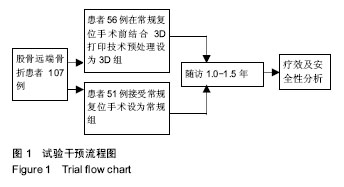
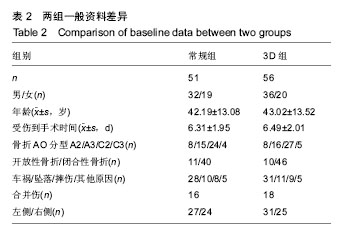
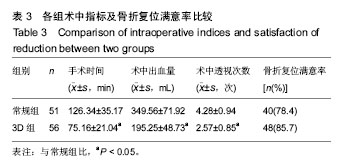
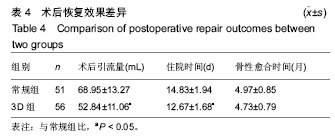
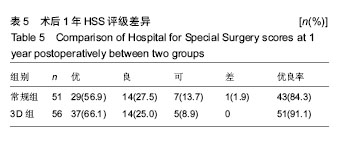

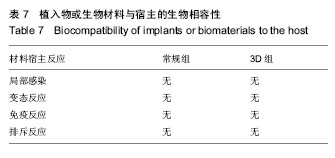
.jpg)
.jpg)